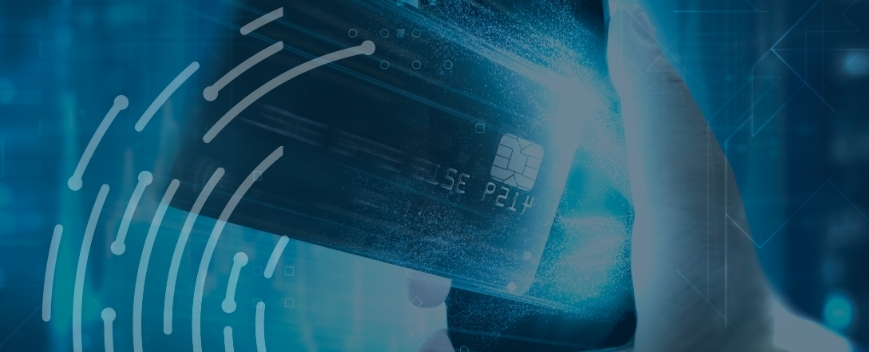ISO 20022 migration: A step-by-step guide

Access trade, receivables and supply chain finance
We assist companies to access trade and receivables finance through our relationships with 270+ banks, funds and alternative finance houses.
Get started
Content
The financial sector is on the cusp of a significant transformation, with ISO 20022 poised to overhaul the global financial messaging landscape significantly.
This transition is not merely a technical update but a strategic shift that promises to enhance the efficiency, interoperability, and compliance of financial transactions worldwide.
With the Swift mandate on the horizon, the move towards ISO 20022 will have a profound impact on a multitude of financial messages, thereby influencing the operational and client engagement frameworks of financial institutions.
By the year 2025, ISO 20022 is slated to become the predominant standard for international cross-border payments, marking a pivotal change in the way financial data is exchanged globally.
Understanding the impact and scope
1. Suggestion
!
Assessing the impact: The migration to ISO 20022 has an impact on various functions of financial institutions. It will necessitate adjustments in operational workflows and client services, underlining the comprehensive nature of this transition. The wide array of messages affected by this change underscores the significant operational implications of this move, and the need for meticulous planning and execution to ensure the transition happens seamlessly.
Defining the Scope: Starting in March 2023, a diverse range of MT messages, including but not limited to business application headers and various credit transfers, have been systematically migrated to ISO 20022 formats. This transition, culminating in 2025, signals a move towards a more data-rich and efficient paradigm of operational efficiency in the realm of cross-border payments.
2. Pre-Migration Planning
Strategic planning: Crafting a strategic plan that aligns with an institution’s business objectives and regulatory mandates is crucial. This plan must encompass a detailed inventory of the messages and systems impacted, ensuring a seamless transition through the phased adaptations leading up to full adoption in 2025.
Stakeholder engagement: The successful migration to ISO 20022 necessitates the early and active engagement of all stakeholders, including IT departments, operational teams, compliance units, and external partners. This collaborative approach is vital for addressing the multifaceted challenges inherent in such a comprehensive migration process.
Risk assessment and management: A thorough risk assessment is imperative to identify potential obstacles, and strategise how to tackle them. Effective risk mitigation strategies will be pivotal in ensuring a smooth transition to ISO 20022.
3. Detailed migration timeline
Preparation phase: This initial stage involves conducting gap analyses, allocating resources, and initiating training programs. Institutions must gear up, as the first wave of migrations started in March 2023, laying the groundwork for the subsequent phases leading to the 2025 milestone.
Implementation phase: This phase is characterised by system upgrades, rigorous testing, data mapping, and validation efforts. A phased approach is essential for managing the wide array of messages transitioning to ISO 20022, ensuring that each step is executed with precision and efficiency.
Go-live and post-implementation: The culmination of the migration process involves the activation of the new standard and the establishment of mechanisms for ongoing support, monitoring, and optimisation. These steps are critical for addressing any challenges that arise post-migration and for ensuring the continued efficacy of the ISO 20022 standard.
4. Key implementation steps
Technology upgrades and integration: The migration necessitates significant technological upgrades and the integration of ISO 20022-compliant solutions. This process is crucial for accommodating the new messaging standard across all operational platforms.
Data quality and mapping: The integrity and consistency of financial data are paramount. A comprehensive mapping process is required to transition existing data formats to the ISO 20022 model, ensuring the high quality and standardisation of data.
Testing and validation: Rigorous testing protocols are essential to verify that systems and processes are fully compliant with ISO 20022 standards and are functioning as intended.
5. Preparation tips for a smooth transition
Early preparation: An early start to the migration process is crucial for effectively managing unforeseen challenges.
Training and communication: Comprehensive training for staff and clear communication with clients about the impending changes are essential for ensuring organisational readiness.
Leveraging expertise: Engaging with experts who have prior experience with ISO 20022 migrations can provide invaluable insights and guidance throughout the process.
6. Key considerations during the migration
Continuous monitoring and optimisation: The migration journey does not end with the implementation phase. Continuous monitoring and the willingness to make necessary adjustments are essential for maximising efficiency and ensuring compliance with the ISO 20022 standard.
Regulatory compliance: Institutions must remain cognisant of regional and global regulatory requirements that may affect the migration timeline or specific aspects of the transition.
Stakeholder communication: Maintaining open lines of communication with all stakeholders is critical for managing expectations and ensuring a collaborative and seamless migration experience.
The transition to ISO 20022 is a monumental step towards harmonising global payment standards.
It necessitates early preparation, strategic planning, and unwavering support of all facets of a financial institution.
As the industry moves towards this new standard, institutions are encouraged to embark on their migration journey without delay.
The transition will enable them to reap the long-term benefits of enhanced data exchanges, innovative banking products, and superior operational efficiency.
Publishing Partners
- Payments Resources
- All Payments Topics
- Podcasts
- Videos
- Conferences














